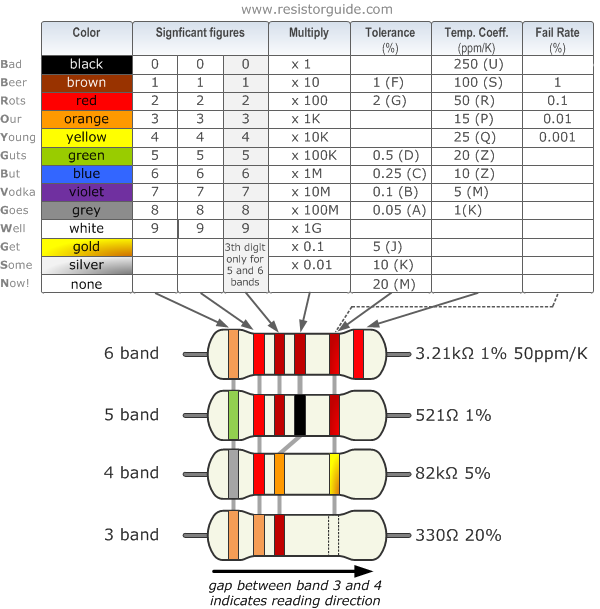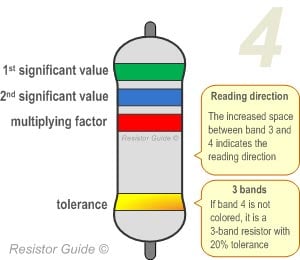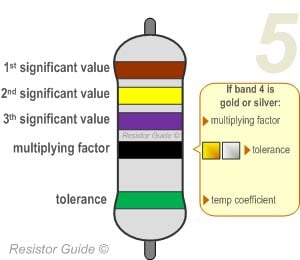Experiment No. 6 Resistor Color Code and Measurement of Resistance
1. Introduction
Objective: The aim of this experiment is to learn how to use the multimeter and how to calculate the value of the resistor.
Components:
- Set of Resistors;
- Multimeter.
1.3 Theory
1.3.1. Resistor: A passive electrical component with two terminals that are used for either limiting or regulating the flow of electric current in electrical circuits. The main purpose of resistor is to reduce the current flow and to lower the voltage in any particular portion of the circuit. It is made of copper wires which are coiled around a ceramic rod and the outer part of the resistor is coated with an insulating paint.
Tolerance: Tolerance indicates how much the measured value of its actual resistance is different from its theoretical value, and it is calculated using percentages.
Resistor Color Code Chart
The chart below shows how to determine the resistance and tolerance for resistors. The table can also be used to specify the color of the bands when the values are known. An automatic resistor calculator can be used to quickly find the resistor values.

How to Read Resistor Colour Code?

- To read them, hold the resistor such that the tolerance band is on your right. The tolerance band is usually gold or silver in colour and is placed a little further away from the other bands.
- Starting from your left, note down all the colours of the bands and write them down in sequence.
- Next, use the table given below to see which
digits they represent.

- The band just next to the tolerance band is the multiplier band. So if the colour of this band is Red (representing 2), the value given is 102 .
Post a Comment
If you have any doubts, please let me know